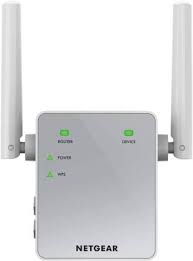Do you have two Netgear extenders connected with your home host WiFi router via WPS or interface, and you can’t find them on the mywifiext login interface or app? You have come to the correct place to find the reasons and solutions. Here, in this article, you will find possible causing factors and fixes to resolve them one-by-one.
Reasons & Solutions: Only One Extender Showing Up on Mywifiext/ mywifiext.local
You’ve got two extenders plugged in, both supposedly working, but Mywifiext.net or mywifiext.local only shows one. It’s frustrating. And confusing. So, what gives?
The short answer: Your network setup or device configuration isn’t playing nice.
Now let’s unpack the long answer like normal humans.
1. Same Network, Same Name = Confusion Central
Most WiFi extenders are set up to duplicate your main WiFi network. That’s kind of the point they extend your range using the same SSID (network name). But when you’re using two extenders, things can get messy.
If both extenders are broadcasting the same SSID and are trying to connect back to the router, they can confuse the hell out of your device. Especially when you log into Mywifiext. Sometimes your device sees one, sometimes the other. Rarely both. Think of it like trying to call two people with the same phone number. Who picks up?
Solution:
During setup, give each extender a slightly different SSID. For example:
- Main router: HomeWiFi
- Extender 1: HomeWiFi_EXT1
- Extender 2: HomeWiFi_EXT2
This helps keep things clean and clear, both for you and for your devices.
2. Double NAT = Double Trouble
Another issue could be that both extenders are acting as their own little routers, which leads to something called Double NAT (Network Address Translation). That’s a fancy term that basically means your network gets confused about what is where.
When this happens, Mywifiext login page may only detect one of the devices at a time. It doesn’t know which “network” to show you.
Solution:
Make sure only one extender is operating in Access Point (AP) mode or bridge mode. That way, it doesn’t try to act like its own router. Most Netgear and similar extenders let you choose between extender mode and AP mode during setup.
3. Mywifiext.net Isn’t the Most Reliable Interface Ever
mywifiext.net/mywifiext.local is a bit… temperamental. It doesn’t always detect multiple devices seamlessly. It’s a simple interface, and it’s not built to handle too many variables at once.
Pro tip:
Instead of relying solely on mywifiext.net, log into each extender individually. You can do this by typing its IP address into your browser. To find the IP:
- Go to your router’s connected device list
- Look for each extender’s name
- Use those IPs to access them directly (like 192.168.1.250)
That way, you skip the middleman and talk directly to the device.
4. Signal Overlap Can Kill Visibility
Believe it or not, WiFi signals can trip over each other. If both extenders are too close to the main router or too close to each other they can interfere. When that happens, your device may only detect the stronger or more stable signal.
What you can do:
- Keep each extender at least 30 feet apart
- Avoid placing them near microwaves, baby monitors, or thick walls
- Run a quick speed test near each one to see which areas are weak
You want each extender to cover a different zone, not fight over the same space.
5. Firmware Woes & Setup Mistakes
Sometimes, it’s not you it’s them. Old firmware, buggy updates, or a missed checkbox during the setup process can make an extender disappear from mywifiext.net.
Fix it like this:
- Check for firmware updates on the manufacturer’s website
- Factory reset the missing extender (usually involves holding a paperclip in a tiny hole for 10 seconds)
- Reconnect it from scratch using your PC or phone browser
The Conclusion
The article is a complete troubleshooting guide to solve the query: “Why I Can’t See Both Extenders on Mywifiext” issue. At first, we have provided with possible reasons why you are facing this issue and then shared solutions to fix it.


